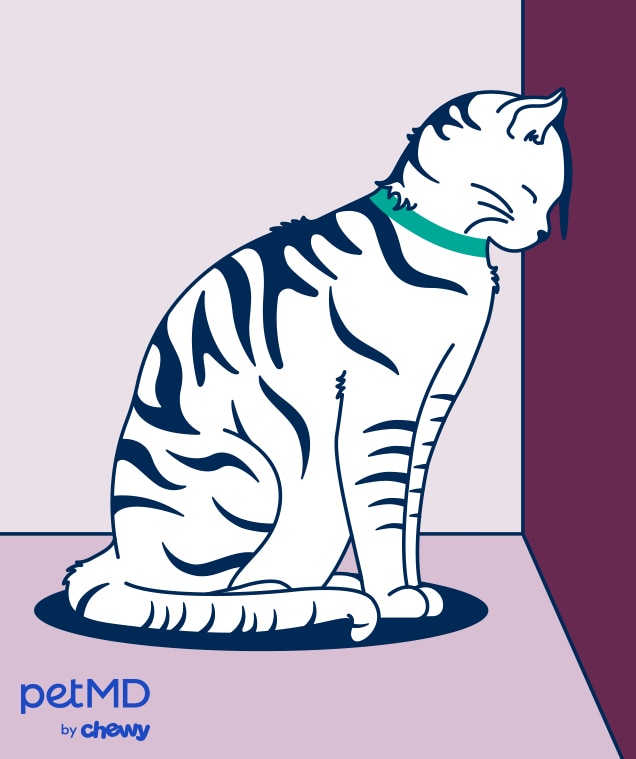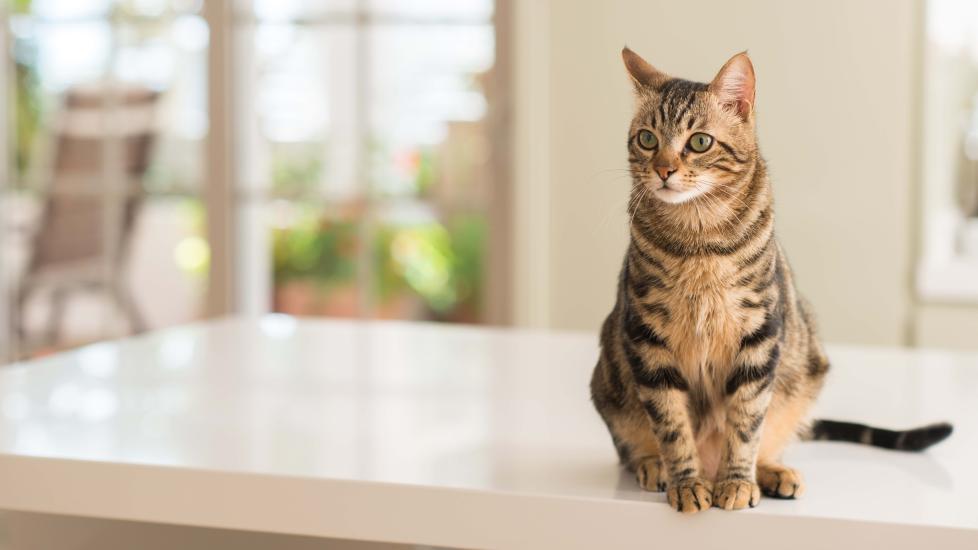Head Pressing in Cats
Adobe Stock/Krakenimages.com
For those fortunate to share a home with a cat, having your cat rub his head against you affectionately is most likely a familiar experience. Cats will also rub the side of their face against furniture or other objects as a way of marking their scent.
But when a cat compulsively and repeatedly presses her head against a wall or other object, a disease process is likely the cause. A cat that is head pressing may look like she is stuck or confused as she pushes her head up against something stationary.
What Is Head Pressing in Cats?
Head pressing is the compulsive act of pressing the head against a wall or other object for no apparent reason. This generally indicates damage to the nervous system, which may be due to an underlying medical issue. Underlying health issues can include prosencephalon disease (in which the forebrain and thalamus parts of the brain are damaged), or toxic poisoning.
Head pressing can occur in any breed, gender, or age of cat.

Symptoms of Head Pressing
Because head pressing can be a clinical sign of many diseases, you may see other changes in addition to your cat pressing her head against things. Some other symptoms can include:
-
Pacing
-
Circling
-
Changes in behavior
-
Changes in vision
-
Disorientation
-
Impaired reflexes or incoordination
If your cat has been exhibiting these signs for a prolonged period, you may notice sores on her feet from pacing or injuries to her face or head (due to pressing against surfaces).
Causes of Head Pressing in Cats
Head pressing is an indication that the nervous system has been damaged. Many disorders can lead to head pressing, including:
-
Head trauma (such as being hit by a car)
-
Toxins (such as lead)
-
Tumors in the brain or elsewhere in the body
-
An infection in the nervous system (parasites, fungi, bacteria, or a virus such as rabies)
-
Portosystemic (liver) shunt
-
Metabolic disorder such as high or low sodium levels in the blood
-
Prosencephalon disease (damage to the front part of the brain)
-
Unregulated diabetes resulting in ketoacidosis or low blood sugar
-
Hereditary brain anomalies
How Veterinarians Diagnose Head Pressing in Cats
If you suspect that your cat is head pressing, have her examined by your veterinarian as soon as possible.
A thorough eye exam, especially a fundic exam that looks at the structures in the back part of the eye (including the retina, optic nerve head, and blood vessels), will be conducted and may give clues as to whether an infectious or inflammatory disease is present. Your veterinarian can perform this eye exam on your cat without sedation or anesthesia, using an ophthalmoscope.
Your veterinarian will likely check your cat’s blood pressure and evaluate urine and blood samples to look for evidence of metabolic disorders or toxins. Other tests to look more closely at the brain and nervous system could include computed tomography (CT) or magnetic resonance imaging (MRI).
Your veterinarian will rely on you to provide a thorough history of your cat’s health, when you first noted the head pressing and other symptoms, and any possible incidents that may have occurred before the symptoms started.
Treatment of Cat Head Pressing
It is important to remember that head pressing is not a disease in itself, but it’s a sign that something has damaged your cat’s nervous system. Therefore, treatment will be dependent upon the underlying cause.
Head pressing is not a disease in itself, but it’s a sign that something has damaged your cat’s nervous system.
Hospitalization and supportive care may be needed if your cat’s clinical signs are severe. Depending on the cause, medications and/or surgery may be a part of the treatment plan. Your veterinarian can give you a better understanding of a prognosis once a definitive diagnosis is made.
Recovery and Management of Head Pressing in Cats
While many causes of head pressing can be very serious and concerning, your veterinarian will be able to guide you in caring for your cat after a diagnosis is made. Repeat neurological exams are generally required and follow-up lab tests or blood pressure measurements may also be needed. Keeping track of your cat’s behavior and response to any prescribed therapies will be very helpful to your veterinary team.
The underlying cause of the head pressing will ultimately determine prognosis—and whether the condition can be cured or managed.
